Fariza Sabrina
Ensemble Learning based Anomaly Detection for IoT Cybersecurity via Bayesian Hyperparameters Sensitivity Analysis
Jul 20, 2023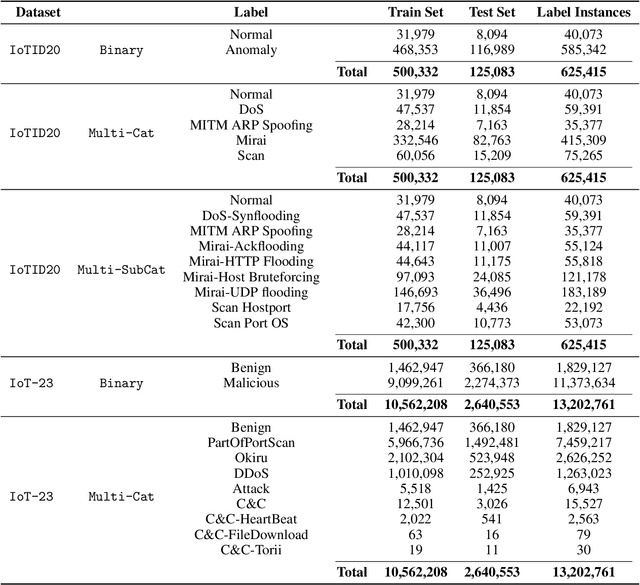
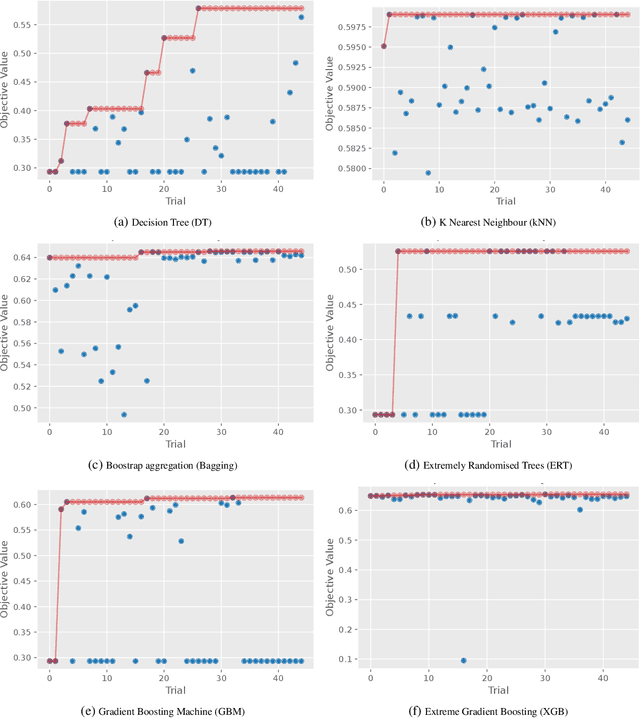
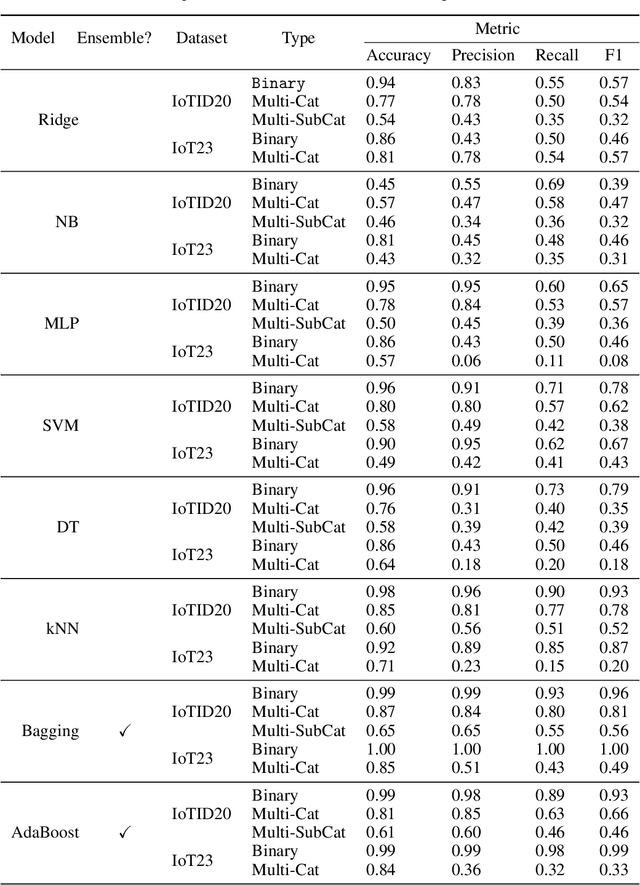
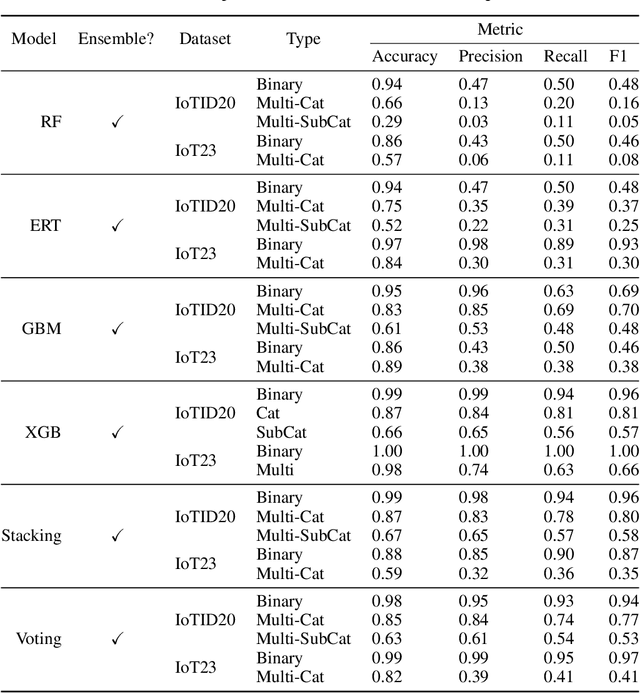
Abstract:The Internet of Things (IoT) integrates more than billions of intelligent devices over the globe with the capability of communicating with other connected devices with little to no human intervention. IoT enables data aggregation and analysis on a large scale to improve life quality in many domains. In particular, data collected by IoT contain a tremendous amount of information for anomaly detection. The heterogeneous nature of IoT is both a challenge and an opportunity for cybersecurity. Traditional approaches in cybersecurity monitoring often require different kinds of data pre-processing and handling for various data types, which might be problematic for datasets that contain heterogeneous features. However, heterogeneous types of network devices can often capture a more diverse set of signals than a single type of device readings, which is particularly useful for anomaly detection. In this paper, we present a comprehensive study on using ensemble machine learning methods for enhancing IoT cybersecurity via anomaly detection. Rather than using one single machine learning model, ensemble learning combines the predictive power from multiple models, enhancing their predictive accuracy in heterogeneous datasets rather than using one single machine learning model. We propose a unified framework with ensemble learning that utilises Bayesian hyperparameter optimisation to adapt to a network environment that contains multiple IoT sensor readings. Experimentally, we illustrate their high predictive power when compared to traditional methods.
Classification and Explanation of Distributed Denial-of-Service (DDoS) Attack Detection using Machine Learning and Shapley Additive Explanation (SHAP) Methods
Jun 27, 2023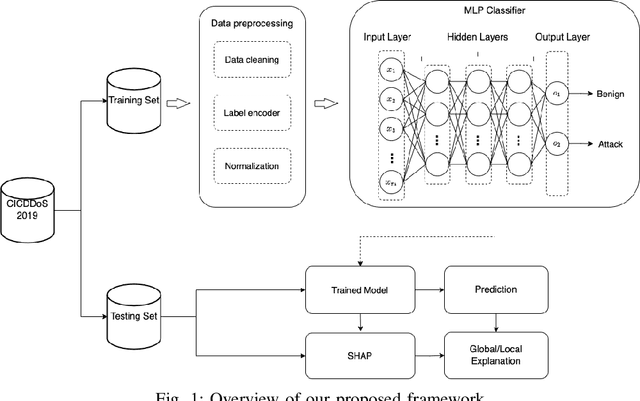
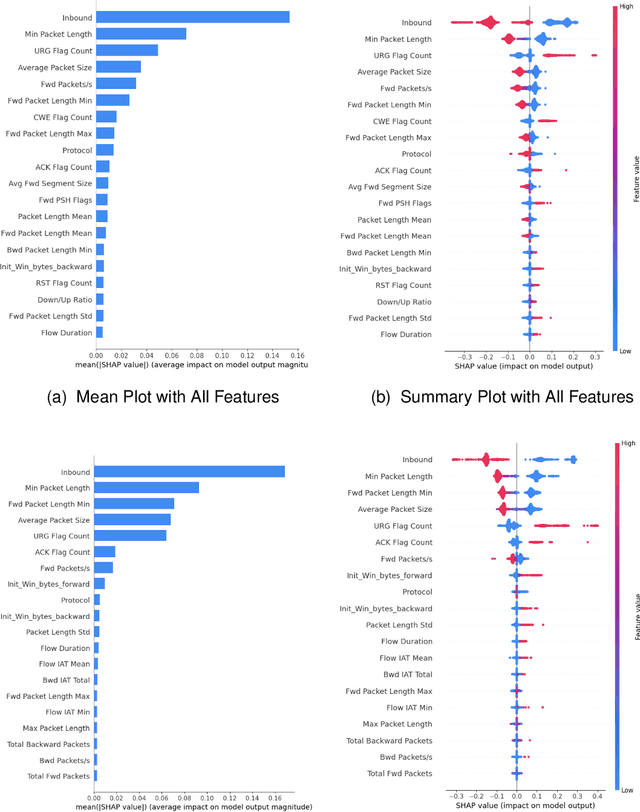
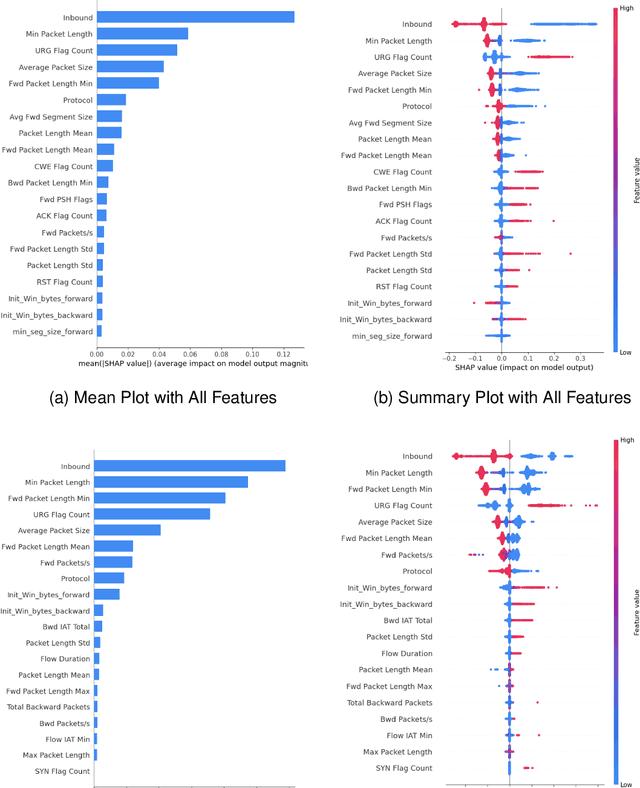
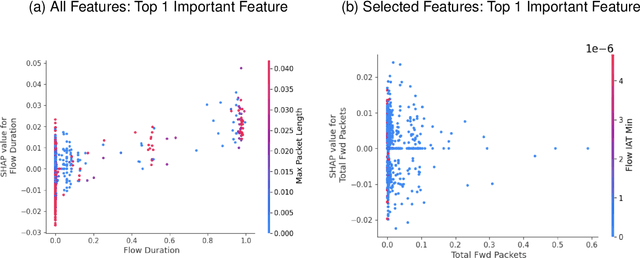
Abstract:DDoS attacks involve overwhelming a target system with a large number of requests or traffic from multiple sources, disrupting the normal traffic of a targeted server, service, or network. Distinguishing between legitimate traffic and malicious traffic is a challenging task. It is possible to classify legitimate traffic and malicious traffic and analysis the network traffic by using machine learning and deep learning techniques. However, an inter-model explanation implemented to classify a traffic flow whether is benign or malicious is an important investigation of the inner working theory of the model to increase the trustworthiness of the model. Explainable Artificial Intelligence (XAI) can explain the decision-making of the machine learning models that can be classified and identify DDoS traffic. In this context, we proposed a framework that can not only classify legitimate traffic and malicious traffic of DDoS attacks but also use SHAP to explain the decision-making of the classifier model. To address this concern, we first adopt feature selection techniques to select the top 20 important features based on feature importance techniques (e.g., XGB-based SHAP feature importance). Following that, the Multi-layer Perceptron Network (MLP) part of our proposed model uses the optimized features of the DDoS attack dataset as inputs to classify legitimate and malicious traffic. We perform extensive experiments with all features and selected features. The evaluation results show that the model performance with selected features achieves above 99\% accuracy. Finally, to provide interpretability, XAI can be adopted to explain the model performance between the prediction results and features based on global and local explanations by SHAP, which can better explain the results achieved by our proposed framework.
Generative Adversarial Networks for Malware Detection: a Survey
Feb 24, 2023Abstract:Since their proposal in the 2014 paper by Ian Goodfellow, there has been an explosion of research into the area of Generative Adversarial Networks. While they have been utilised in many fields, the realm of malware research is a problem space in which GANs have taken root. From balancing datasets to creating unseen examples in rare classes, GAN models offer extensive opportunities for application. This paper surveys the current research and literature for the use of Generative Adversarial Networks in the malware problem space. This is done with the hope that the reader may be able to gain an overall understanding as to what the Generative Adversarial model provides for this field, and for what areas within malware research it is best utilised. It covers the current related surveys, the different categories of GAN, and gives the outcomes of recent research into optimising GANs for different topics, as well as future directions for exploration.
Improving Multilayer-Perceptron(MLP)-based Network Anomaly Detection with Birch Clustering on CICIDS-2017 Dataset
Aug 20, 2022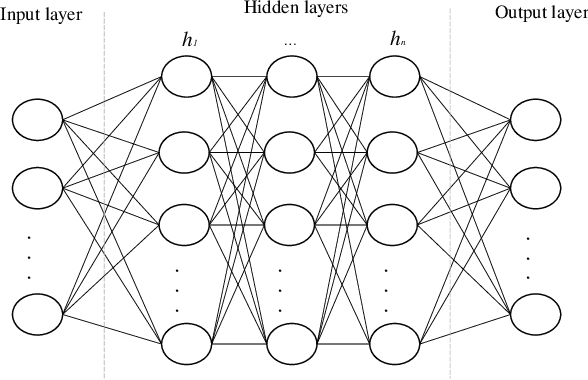
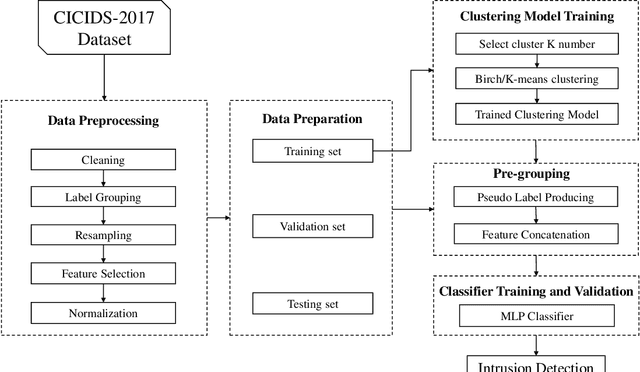
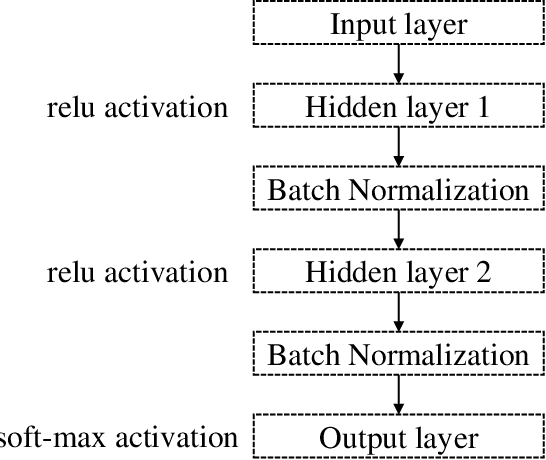
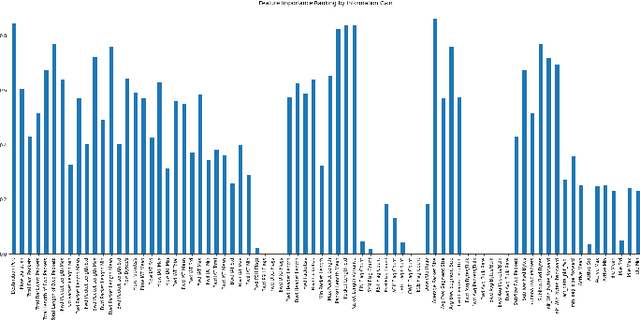
Abstract:Machine learning algorithms have been widely used in intrusion detection systems, including Multi-layer Perceptron (MLP). In this study, we proposed a two-stage model that combines the Birch clustering algorithm and MLP classifier to improve the performance of network anomaly multi-classification. In our proposed method, we first apply Birch or Kmeans as an unsupervised clustering algorithm to the CICIDS-2017 dataset to pre-group the data. The generated pseudo-label is then added as an additional feature to the training of the MLP-based classifier. The experimental results show that using Birch and K-Means clustering for data pre-grouping can improve intrusion detection system performance. Our method can achieve 99.73% accuracy in multi-classification using Birch clustering, which is better than similar researches using a stand-alone MLP model.
Explainable and Optimally Configured Artificial Neural Networks for Attack Detection in Smart Homes
May 17, 2022
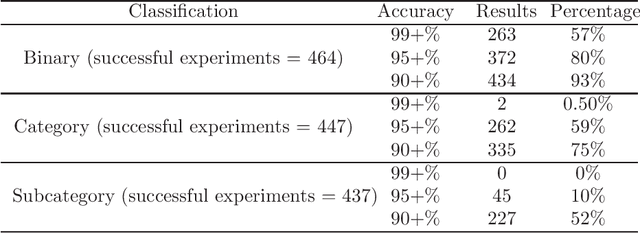

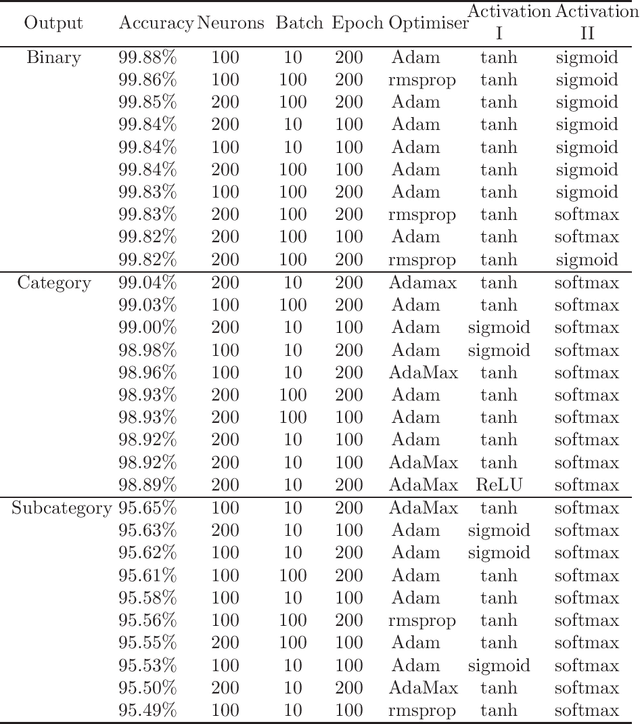
Abstract:In recent years cybersecurity has become a major concern in adaptation of smart applications. Specially, in smart homes where a large number of IoT devices are used having a secure and trusted mechanisms can provide peace of mind for users. Accurate detection of cyber attacks is crucial, however precise identification of the type of attacks plays a huge role if devising the countermeasure for protecting the system. Artificial Neural Networks (ANN) have provided promising results for detecting any security attacks for smart applications. However, due to complex nature of the model used for this technique it is not easy for normal users to trust ANN based security solutions. Also, selection of right hyperparameters for ANN architecture plays a crucial role in the accurate detection of security attacks, especially when it come to identifying the subcategories of attacks. In this paper, we propose a model that considers both the issues of explainability of ANN model and the hyperparameter selection for this approach to be easily trusted and adapted by users of smart home applications. Also, our approach considers a subset of the dataset for optimal selection of hyperparamters to reduce the overhead of the process of ANN architecture design. Distinctively this paper focuses on configuration, performance and evaluation of ANN architecture for identification of five categorical attacks and nine subcategorical attacks. Using a very recent IoT dataset our approach showed high performance for intrusion detection with 99.9%, 99.7%, and 97.7% accuracy for Binary, Category, and Subcategory level classification of attacks.
LSTM-Autoencoder based Anomaly Detection for Indoor Air Quality Time Series Data
Apr 14, 2022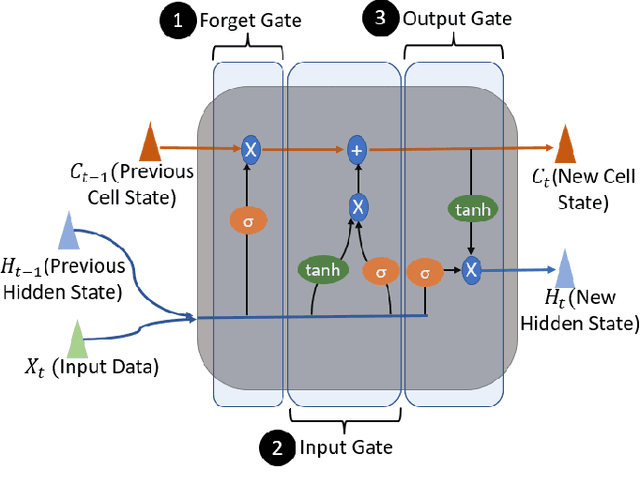
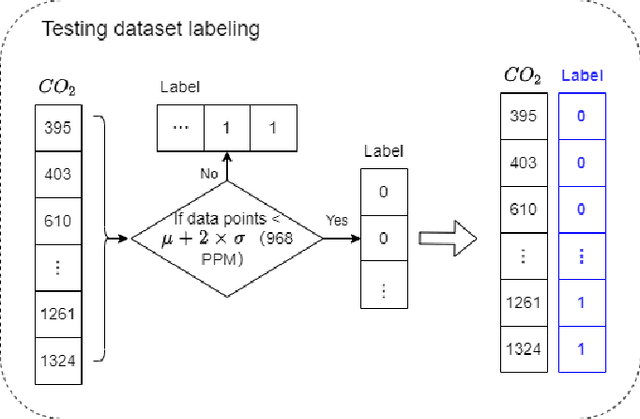
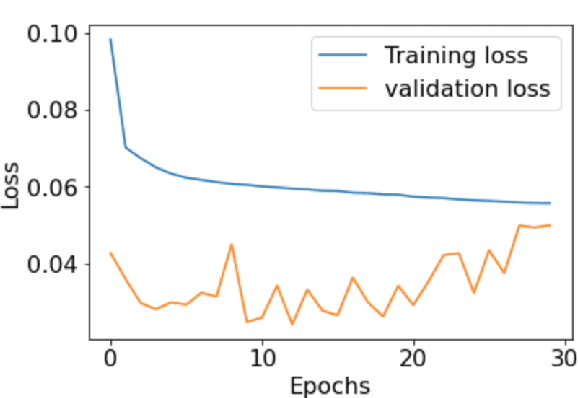
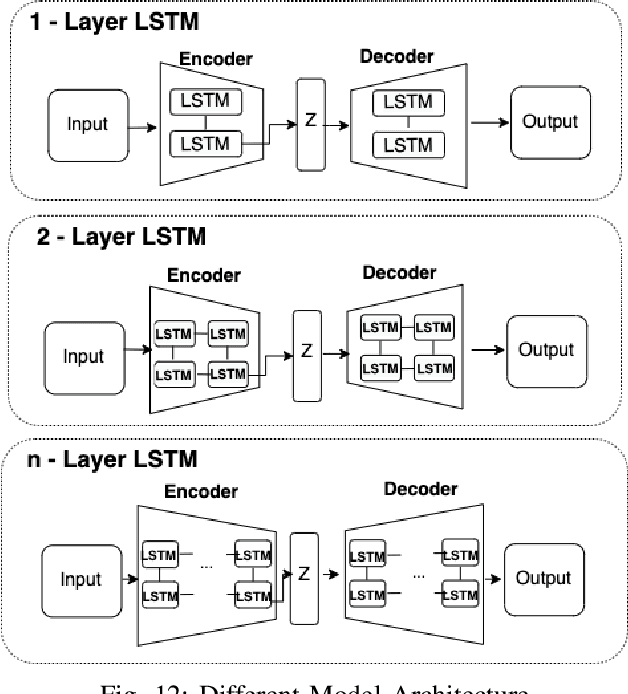
Abstract:Anomaly detection for indoor air quality (IAQ) data has become an important area of research as the quality of air is closely related to human health and well-being. However, traditional statistics and shallow machine learning-based approaches in anomaly detection in the IAQ area could not detect anomalies involving the observation of correlations across several data points (i.e., often referred to as long-term dependences). We propose a hybrid deep learning model that combines LSTM with Autoencoder for anomaly detection tasks in IAQ to address this issue. In our approach, the LSTM network is comprised of multiple LSTM cells that work with each other to learn the long-term dependences of the data in a time-series sequence. Autoencoder identifies the optimal threshold based on the reconstruction loss rates evaluated on every data across all time-series sequences. Our experimental results, based on the Dunedin CO2 time-series dataset obtained through a real-world deployment of the schools in New Zealand, demonstrate a very high and robust accuracy rate (99.50%) that outperforms other similar models.
IGRF-RFE: A Hybrid Feature Selection Method for MLP-based Network Intrusion Detection on UNSW-NB15 Dataset
Mar 30, 2022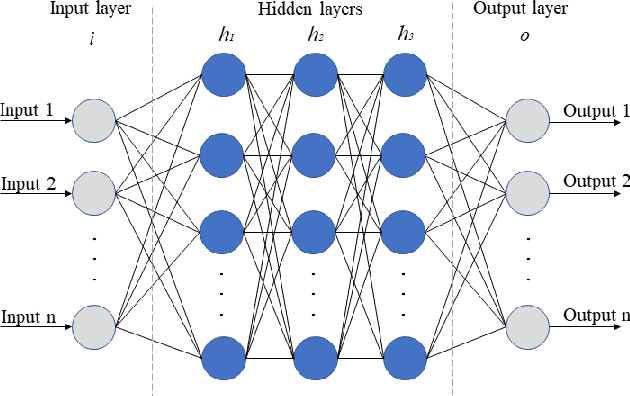
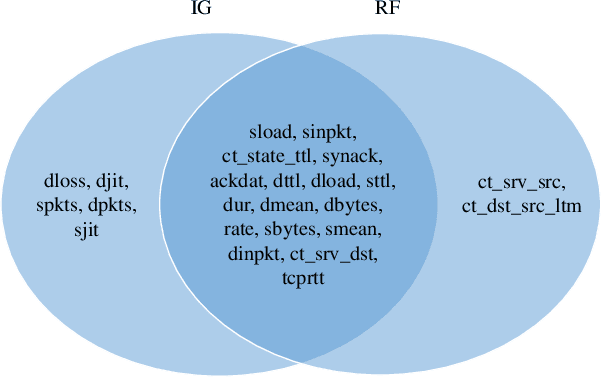
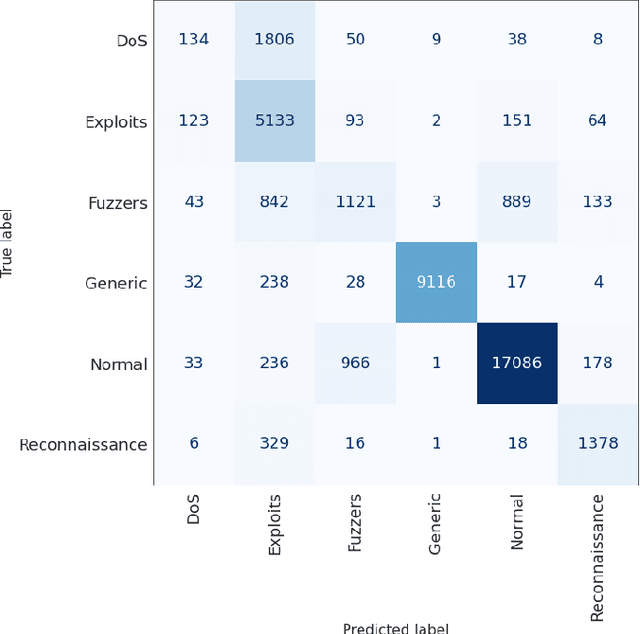
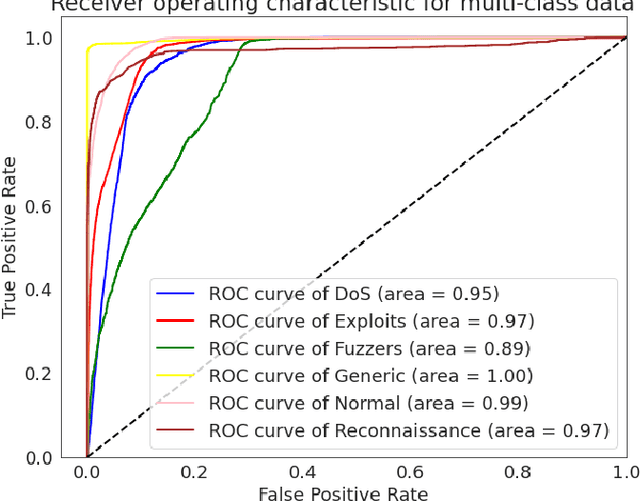
Abstract:The effectiveness of machine learning models is significantly affected by the size of the dataset and the quality of features as redundant and irrelevant features can radically degrade the performance. This paper proposes IGRF-RFE: a hybrid feature selection method tasked for multi-class network anomalies using a Multilayer perceptron (MLP) network. IGRF-RFE can be considered as a feature reduction technique based on both the filter feature selection method and the wrapper feature selection method. In our proposed method, we use the filter feature selection method, which is the combination of Information Gain and Random Forest Importance, to reduce the feature subset search space. Then, we apply recursive feature elimination(RFE) as a wrapper feature selection method to further eliminate redundant features recursively on the reduced feature subsets. Our experimental results obtained based on the UNSW-NB15 dataset confirm that our proposed method can improve the accuracy of anomaly detection while reducing the feature dimension. The results show that the feature dimension is reduced from 42 to 23 while the multi-classification accuracy of MLP is improved from 82.25% to 84.24%.
Training a Bidirectional GAN-based One-Class Classifier for Network Intrusion Detection
Feb 02, 2022

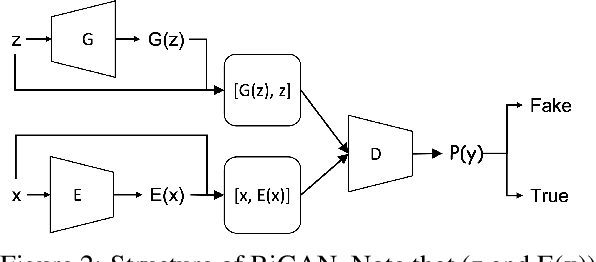
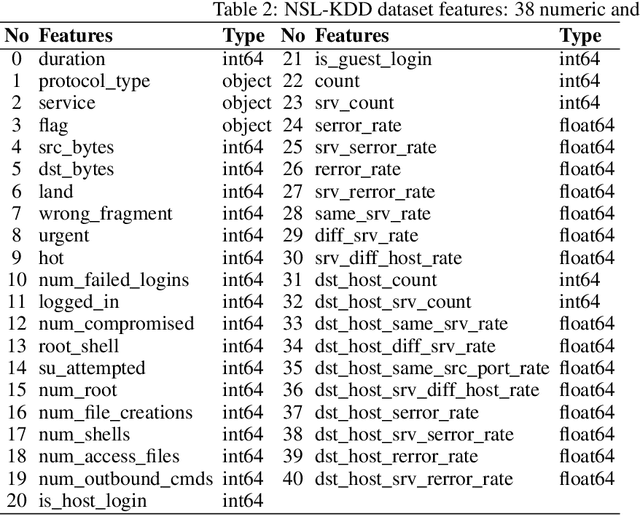
Abstract:The network intrusion detection task is challenging because of the imbalanced and unlabeled nature of the dataset it operates on. Existing generative adversarial networks (GANs), are primarily used for creating synthetic samples from reals. They also have been proved successful in anomaly detection tasks. In our proposed method, we construct the trained encoder-discriminator as a one-class classifier based on Bidirectional GAN (Bi-GAN) for detecting anomalous traffic from normal traffic other than calculating expensive and complex anomaly scores or thresholds. Our experimental result illustrates that our proposed method is highly effective to be used in network intrusion detection tasks and outperforms other similar generative methods on the NSL-KDD dataset.
MSD-Kmeans: A Novel Algorithm for Efficient Detection of Global and Local Outliers
Oct 15, 2019
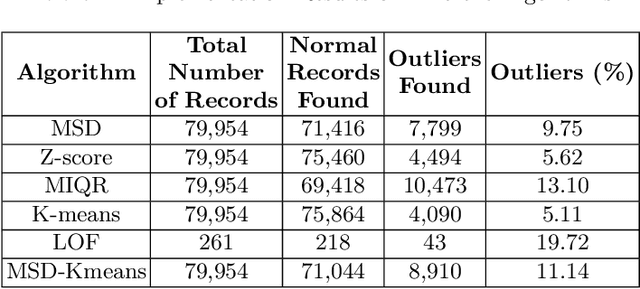

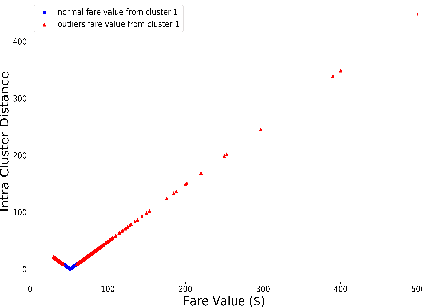
Abstract:Outlier detection is a technique in data mining that aims to detect unusual or unexpected records in the dataset. Existing outlier detection algorithms have different pros and cons and exhibit different sensitivity to noisy data such as extreme values. In this paper, we propose a novel cluster-based outlier detection algorithm named MSD-Kmeans that combines the statistical method of Mean and Standard Deviation (MSD) and the machine learning clustering algorithm K-means to detect outliers more accurately with the better control of extreme values. There are two phases in this combination method of MSD-Kmeans: (1) applying MSD algorithm to eliminate as many noisy data to minimize the interference on clusters, and (2) applying K-means algorithm to obtain local optimal clusters. We evaluate our algorithm and demonstrate its effectiveness in the context of detecting possible overcharging of taxi fares, as greedy dishonest drivers may attempt to charge high fares by detouring. We compare the performance indicators of MSD-Kmeans with those of other outlier detection algorithms, such as MSD, K-means, Z-score, MIQR and LOF, and prove that the proposed MSD-Kmeans algorithm achieves the highest measure of precision, accuracy, and F-measure. We conclude that MSD-Kmeans can be used for effective and efficient outlier detection on data of varying quality on IoT devices.
 Add to Chrome
Add to Chrome Add to Firefox
Add to Firefox Add to Edge
Add to Edge